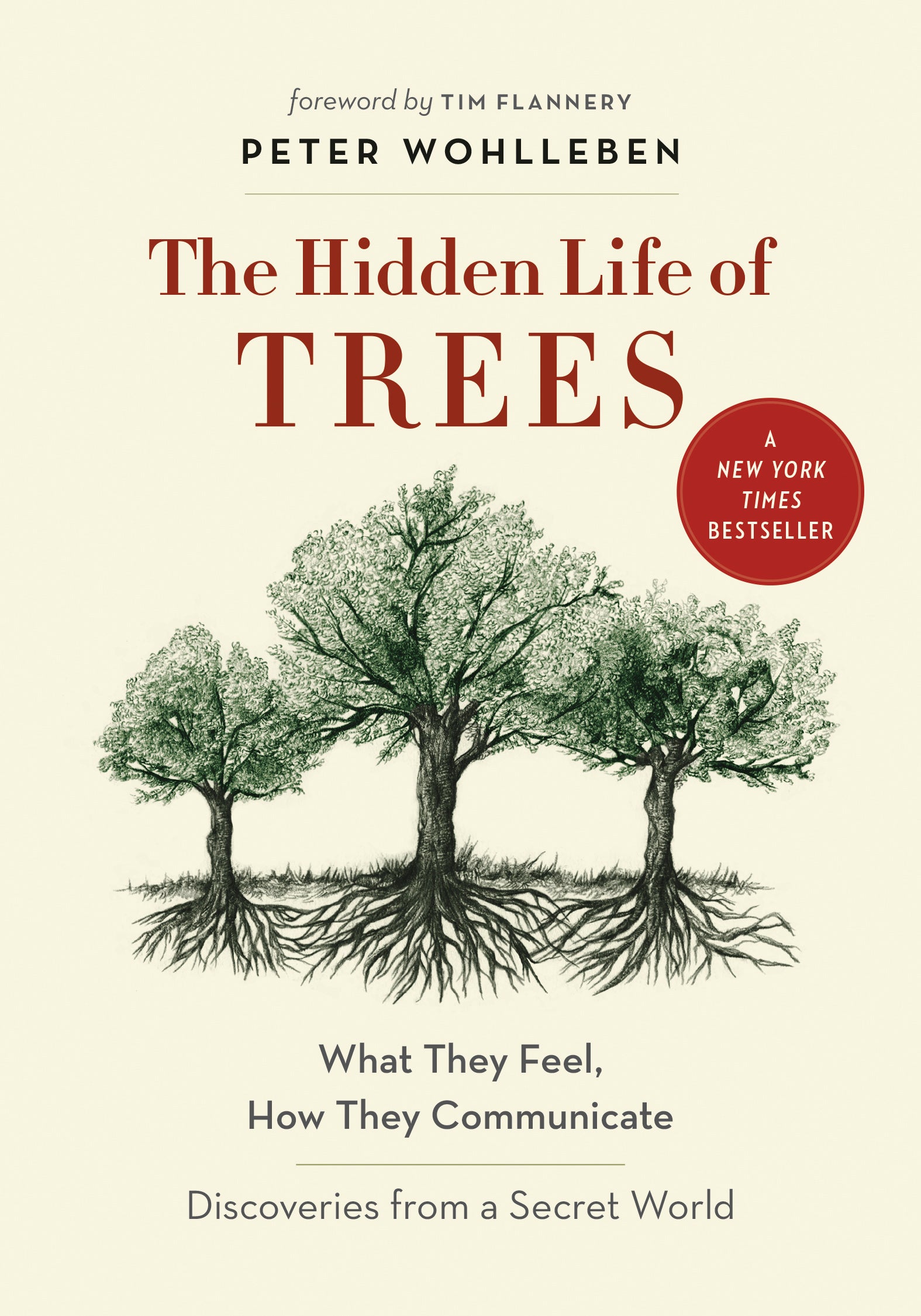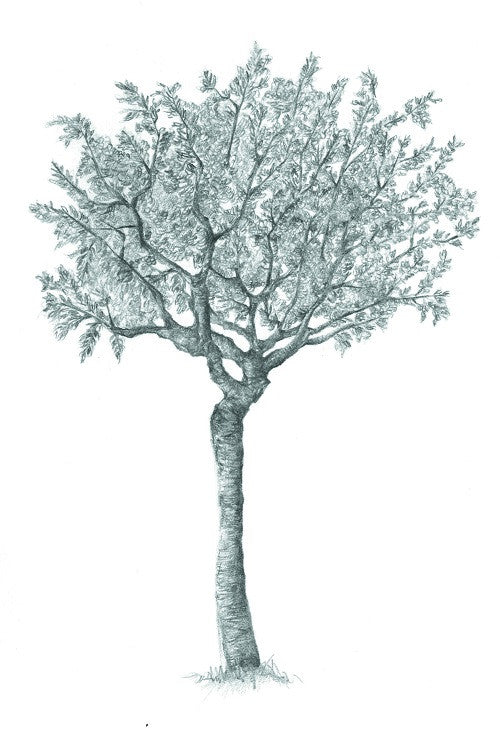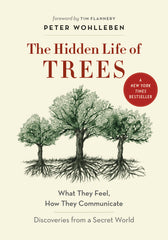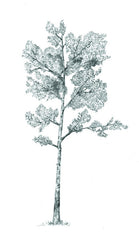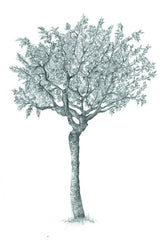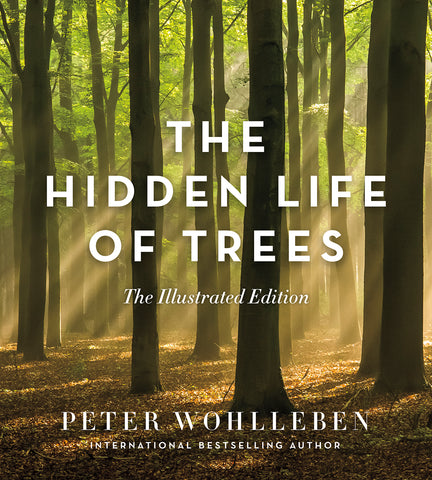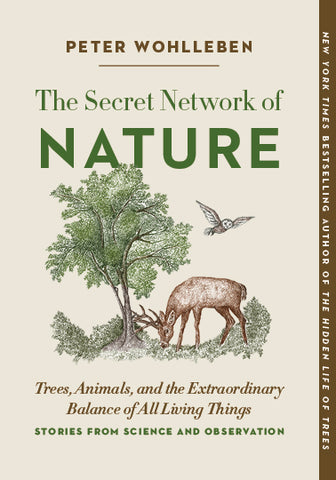The Hidden Life of Trees
What They Feel, How They Communicate—Discoveries from A Secret World
- ISBN: 9781771642484
- Tags: Audiobook Available, Jane Billinghurst, Literary Non-fiction, Nature & Environment, Peter Wohlleben, Tim Flannery,
- Dimensions: 5.25 x 7.5
- Published On: 9/13/2016
- 288 Pages
Audiobook Available (Details)
Reading Guide Available (Download/See All)
AN INSTANT NEW YORK TIMES BESTSELLER
With more than 2 million copies sold worldwide, this beautifully-written book journeys deep into the forest to uncover the fascinating—and surprisingly moving—hidden life of trees.
“At once romantic and scientific, [Wohlleben's] view of the forest calls on us all to reevaluate our relationships with the plant world.”―Daniel Chamovitz, PhD, author of What a Plant Knows
Are trees social beings? In The Hidden Life of Trees forester and author Peter Wohlleben convincingly makes the case that, yes, the forest is a social network. He draws on groundbreaking scientific discoveries to describe how trees are like human families: tree parents live together with their children, communicate with them, support them as they grow, share nutrients with those who are sick or struggling, and even warn each other of impending dangers. Wohlleben also shares his deep love of woods and forests, explaining the amazing processes of life, death, and regeneration he has observed in his woodland.
After learning about the complex life of trees, a walk in the woods will never be the same again.
Includes a Note From a Forest Scientist, by Dr.Suzanne Simard
Published in Partnership with the David Suzuki Institute
Peter Wohlleben spent over twenty years working for the forestry commission in Germany before leaving to put his ideas of ecology into practice. He now runs an environmentally-friendly woodland in Germany, where he is working for the return of primeval forests. He is the author of numerous books about the natural world including the New York Times bestseller The Hidden Life of Trees, The Inner Lives of Animals, and The Secret Wisdom of Nature, which together make up his bestselling The Mysteries of Nature Series. He has also written numerous books for children including Can You Hear the Trees Talking? and Peter and the Tree Children. To learn more about Peter and his books, visit his website at peterwohllebenbooks.com.
"The matter-of-fact Mr. Wohlleben has delighted readers and talk-show audiences alike with the news - long known to biologists - that trees in the forest are social beings."
—Sally McGrane, The New York Times
"You will never look at a tree the same way after reading Peter Wohlleben’s The Hidden Life of Trees, which reveals the mindboggling properties and behavior of these terrestrial giants. Read this electrifying book, then go out and hug a tree - with admiration and gratitude."
—Dr. David Suzuki, co-founder of the David Suzuki Foundation, award-winning scientist, environmentalist, and broadcaster
"[A] passionate and penetrating guide to the inner workings of each tree and every woodland."
—Gerard Helferich, Wall Street Journal
"[W]hat emerges from Wohlleben’s revelatory reframing of our oldest companions is an invitation to see anew what we have spent eons taking for granted"
—Maria Popova, Brainpickings
"[A] declaration of love and an engrossing primer on trees, brimming with facts and an unashamed awe for nature."
—Andrea Wulf, Washington Post
"To read Peter Wohlleben's The Hidden Life of Trees is to discover a secret world that you never knew existed in the forest.”
—Huffington Post Canada
"The Hidden Life of Trees is a wonderful, provocative book that draws together half a century of much-neglected and misunderstood plant science and frames it within field observations by an acute and empathetic forester."
—John Burnside, The New Statesman
"I don’t think that 2016 brought us a book that was more beautiful, more important – or better."
—Paul Taunton, The National Post
"German forester Peter Wohlleben’s account of anthropomorphized trees … infuriates scientists and utterly charms everyone else who reads it."
—Brian Bethune, Maclean's Magazine
"Peter Wohlleben’s The Hidden Life of Trees breaks entirely new ground ... [Wohlleben] has listened to trees and decoded their language. Now he speaks for them."
—Thomas Pakenham, the New York Review of Books
"This fascinating book will intrigue readers who love a walk through the woods."
—Publishers Weekly
From Chapter 1: Friendships If you look at roadside embankments, you might be able to see how trees connect with each other through their root systems. On these slopes, rain often washes away the soil, leaving the underground networks exposed. Scientists in the Harz mountains in Germany have discovered that this really is a case of interdependence, and most individual trees of the same species growing in the same stand are connected to each other through their root systems. It appears that nutrient exchange and helping neighbors in times of need is the rule, and this leads to the conclusion that forests are superorganisms with interconnections much like ant colonies. Of course, it makes sense to ask whether tree roots are simply wandering around aimlessly underground and connecting up when they happen to bump into roots of their own kind. Once connected, they have no choice but to exchange nutrients. They create what looks like a social network, but what they are experiencing is nothing more than a purely accidental give and take. In this scenario, chance encounters replace the more emotionally charged image of active support, though even chance encounters offer benefits for the forest ecosystem. But Nature is more complicated than that. According to Massimo Maffei from the University of Turin, plants—and that includes trees—are perfectly capable of distinguishing their own roots from the roots of other species and even from the roots of related individuals. But why are trees such social beings? Why do they share food with their own species and sometimes even go so far as to nourish their competitors? The reasons are the same as for human communities: there are advantages to working together. A tree is not a forest. On its own, a tree cannot establish a consistent local climate. It is at the mercy of wind and weather. But together, many trees create an ecosystem that moderates extremes of heat and cold, stores a great deal of water, and generates a great deal of humidity. And in this protected environment, trees can live to be very old. To get to this point, the community must remain intact no matter what. If every tree were looking out only for itself, then quite a few of them would never reach old age. Regular fatalities would result in many large gaps in the tree canopy, which would make it easier for storms to get inside the forest and uproot more trees. The heat of summer would reach the forest floor and dry it out. Every tree would suffer. Every tree, therefore, is valuable to the community and worth keeping around for as long as possible. And that is why even sick individuals are supported and nourished until they recover. Next time, perhaps it will be the other way round, and the supporting tree might be the one in need of assistance. When thick silver-gray beeches behave like this, they remind me of a herd of elephants. Like the herd, they, too, look after their own, and they help their sick and weak back up onto their feet.

